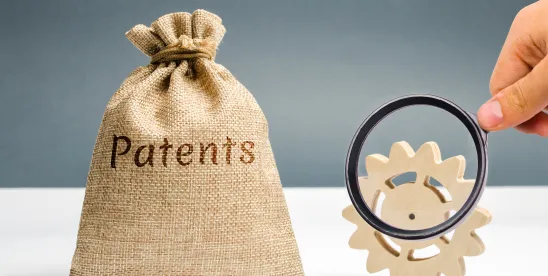On appeal from an interference proceeding, the US Court of Appeals for the Federal Circuit reversed a Patent Trial & Appeal Board decision that found the claims of the senior party’s patent were not invalid as time-barred under 35 U.S.C. § 135(b)(1). The Federal Circuit concluded that the “two-way test” requires looking to see if either set of pre-critical and post-critical date claims contains a material limitation not found in the other and not just looking to see if the post-critical date claims have additional material limitations. Speck et al. v. Bates et al., Case No. 22-1905 (Fed. Cir. May 23, 2024) (Dyk, Bryson, Stoll, JJ.)
35 U.S.C. § 135(b)(1), pre-AIA, provides that “a claim which is the same as, or for the same or substantially the same subject matter as, a claim of an issued patent may not be made in any application unless such a claim is made prior to one year from the date on which the patent was granted.” This has been described as a statute of repose that places a time limit on a patentee’s exposure to an interference, the deadline for which is referred to as the “critical date.” At issue in this appeal was the “long-standing” exception to § 135(b)(1) for instances where the applicant files its claim after the critical period but has already been claiming substantially the same invention as the patentee during the critical period.
This case involves drug-coated balloon catheter technology. Bates is the senior party that filed a patent application, and Speck is the junior party that owns an issued patent. Speck’s patent issued on September 4, 2012, whereas Bates filed his application on August 29, 2013, six days before the critical date of Speck’s patent (i.e., one year after the filing date). Bates amended the application on August 30, 2013 (still before the critical date), and canceled all of the original claims and replaced them with new claims. Bates later amended the claims after the critical date to add a requirement that the device be “free of a containment material atop the drug layer.” The amendment was made to overcome a rejection from the examiner during prosecution.
Speck filed a motion to terminate the interference on the ground that the claims of Bates’s application were time-barred under § 135(b)(1) because Bates amended the claims more than one year after Speck’s patent issued. Speck also moved the Board to find that the claims of Bates’s application were unpatentable for lack of written description.
The Board denied Speck’s motion to terminate under § 135(b)(1), finding that the later-amended claims did not differ materially from the claims in other patents and patent applications Bates owned that were filed prior to the critical date, because “Speck ha[d] not directed [the Board] to a material limitation of the Bates involved claims that is not present in the earlier Bates claims.” Speck filed a motion for rehearing, which the Board denied. The Board also denied Speck’s motion to find that Bates’s claims lacked sufficient written description. Speck appealed.
The Federal Circuit reversed and agreed with Speck’s argument that the exception to § 135(b)(1)’s time bar can only be avoided if a “two-way test” is satisfied: (1) the pre-critical date claim must not contain any material limitation that is absent from the post-critical date claim, and (2) the post-critical date claim must not contain any material limitation that is absent from the pre-critical date claim. The Court found that the Board erred by only analyzing whether the post-critical date claims were narrower than the pre-critical date claims, which Speck referred to as the “one-way test.” Accordingly, the Court ruled that because Bates’s application’s pre-critical date claims were materially different from the post-critical date claims the exception to § 135(b)(1) did not apply, and the claims of the application were time-barred under § 135(b)(1).
In so holding, the Federal Circuit pointed to precedent from its ancestor court, the US Court of Customs and Patent Appeals (CCPA), whose precedent is binding on the Federal Circuit. In its 1959 decision in Stalego v. Heymes, the CCPA articulated a test that is the same as the two-way test (i.e., claims are not for substantially the same subject matter if one of them contains one or more material limitations that are not found in the other). Bates’s amendments were material, and thus the time bar did not apply. The Federal Circuit distinguished other precedent where the CCPA found differences between pre-critical date claims and post-critical date claims to not be material, explaining that in this case Bates added the limitation in issue to overcome an obviousness rejection, which created a “well-established” presumption that the additional limitation was necessary to establish patentability and thus was material.
Practice Note: Although this case arose in the context of a pre-AIA interference proceeding, it should be expected that the Federal Circuit will apply this jurisprudence to post-AIA derivation proceedings.




 />i
/>i
